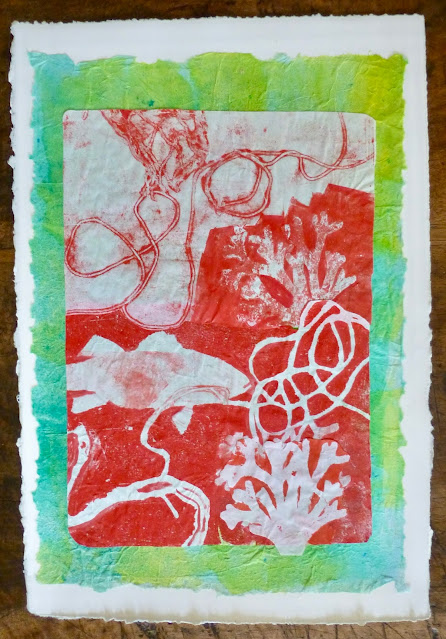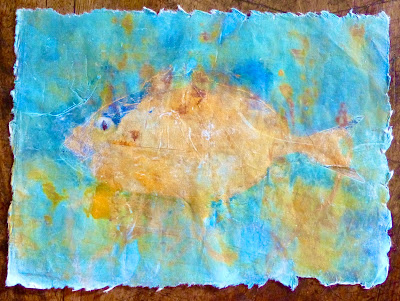 |
| Children's story pages, Mary M Payne |
This is the story of the Mediterranean Sea. It is the story of fish...and the printing of fish .
E is for Ectothermique.. the scientific name for fish, almost 32,000 species, more than all the vertebrates put together.
M is for mussels.. a bivalve that lives in salty water or fresh. Here in France we eat mussels whenever we can. Delicious. Bring me “ Moules Marinieres” we say. "sil-vous-plait".
P is for Pulpe.. a most intelligent mollusk with eight legs and a soft body. It is also a tasty dish, but who dares to eat such a cunning creature.
R is for red starfish.... The Mediterranean red star is called Echinaster sepositus, an echinoderm in the shape of a star. Sounds like a Roman emperor, doesn’t it?
E is for endangered... All sea creatures are in peril now. Fishermen are taking too many fish and wasting fish with their callous methods. And then there are plastics and all manner of trash dumped in the seas. Shame on us. We need to do better.
I is for Impression... the way the Japanese have done it for centuries called Gyotaku. This is a way to record shape and size of a fish, a method started by the Samurai. All you need is some ink and some rice paper. This story is also about Gyotaku.
N is for Neptune grass... Great prairies of Neptune grass, 15 kilometers wide, have been growing in the sea for tens of millions of years. Their fibrous materials, when turned by the waves make spherical balls which wash up on the shore.
T is for tidal pools... Hardy organisms such as mussels, clams and sea stars shelter in tide pools near the shore. These creatures must adapt to differences in water/ salt content , currents, exposure to sun and predators.
E is for Ecosystem.... a community of organisms, animals and plants that share cycles of energy and nutrients.
S is for Sea bass… the most cultivated and the most commercially fished in the Mediterranean Sea. We call it “bar “ in France and serve it with butter and lemon … always a tasty, white fish.
Maybe this story is also about good eating. But I want this story foremost to be about respect for the gift of the Mediterranean Sea and all it's glorious creatures.

















